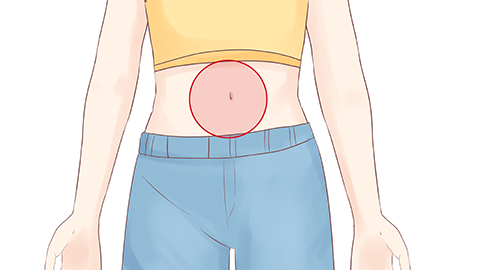What causes pain around the navel?
Periumbilical pain may be caused by factors such as abdominal cold exposure, improper diet, omphalitis, irritable bowel syndrome, cholecystitis, and others. Appropriate measures can be taken based on the specific situation to relieve the discomfort. It is recommended to seek timely medical consultation to clarify the cause and follow medical advice for treatment.

1. Abdominal Cold Exposure: The skin around the navel is relatively thin, and inadequate warmth retention may easily lead to cold exposure of the abdomen. The gastrointestinal tract may experience spasms due to cold stimulation, causing pain. Applying a hot water bag to the periumbilical area, drinking more warm water, and keeping the abdomen warm may help alleviate the pain gradually.
2. Improper Diet: Consuming large amounts of raw, cold, or spicy foods within a short time or overeating can increase the burden on the gastrointestinal system, causing functional disturbances and periumbilical pain. It is recommended to adjust dietary habits, avoid irritant foods, follow the principle of eating smaller meals more frequently, and consume easily digestible foods such as millet porridge or Chinese yam porridge to support gastrointestinal health.
3. Omphalitis: Improper cleaning of the navel may lead to accumulation of dirt and bacterial growth, causing inflammation, periumbilical pain, and symptoms such as redness, swelling, discharge, and odor. Patients may use medications such as erythromycin ointment, mupirocin ointment, or cefaclor granules under medical guidance to alleviate symptoms.
4. Irritable Bowel Syndrome: Multiple factors, including psychological stress, dietary influences, and intestinal infections, may interact and increase intestinal sensitivity, causing functional disturbances. This may lead to periumbilical pain, often accompanied by diarrhea or constipation, with symptoms related to emotional and dietary changes. Patients may follow medical advice to use medications such as pinaverium bromide tablets, trimebutine maleate tablets, or Bifidobacterium triple viable capsules to relieve discomfort.
5. Cholecystitis: Often caused by obstruction of the cystic duct or bacterial infection, during an inflammatory episode, pain may radiate to the periumbilical area, accompanied by right upper quadrant pain, nausea, vomiting, fever, and other symptoms. Patients may take medications such as anti-inflammatory and bile-promoting tablets, amoxicillin capsules, or ursodeoxycholic acid capsules under medical guidance to improve symptoms.
In daily life, adjusting lifestyle habits, avoiding strenuous exercise, maintaining regular eating patterns, and choosing easily digestible, high-fiber foods can contribute to overall health.
References:
[1] Wang Kangyi, Zhang Ying. Research Progress on the Correlation Between Diarrhea-Predominant Irritable Bowel Syndrome and Yang Deficiency Constitution [J]. Journal of Clinical Research in Traditional Chinese Medicine, 2024, 16(19):144-148.
[2] Zhao Wenxia, Guo Shaoju, Ma Suping, et al. Expert Consensus on TCM Diagnosis and Treatment of (Acute and Chronic) Cholecystitis and Cholelithiasis (2023) [J]. Chinese Journal of Integrative Medicine on Digestive Diseases, 2024, 32(10):839-848.








